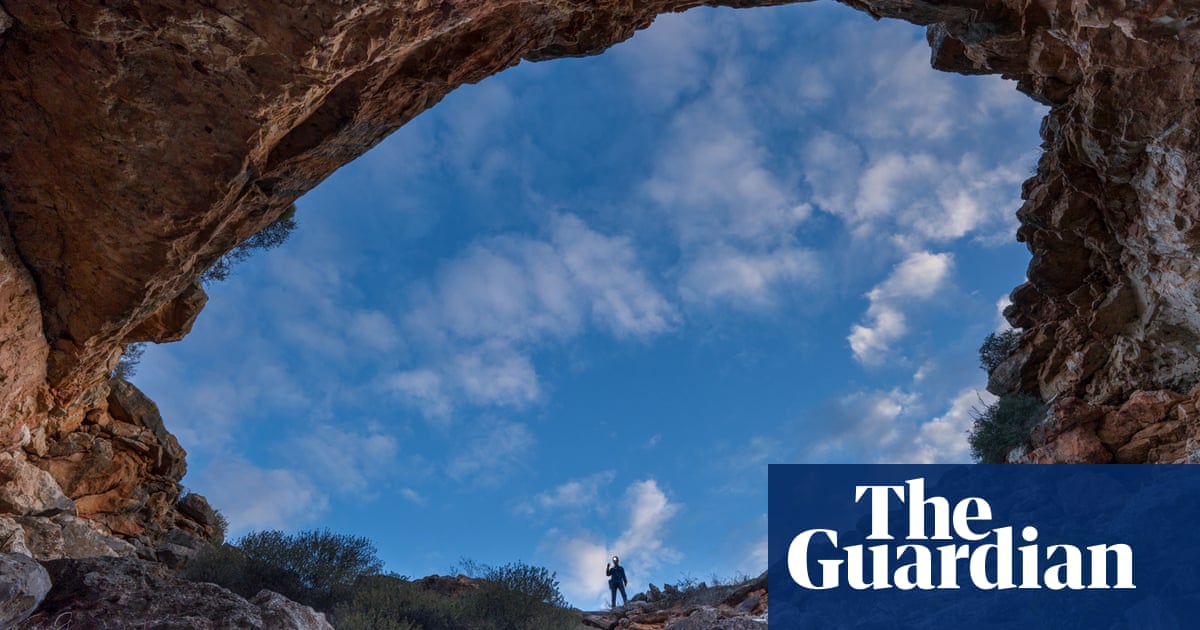Scientists sound the alarm for Nullarbor’s fragile limestone caves and unique underground creatures | Conservation

On the Nullarbor plain, the world’s largest hydrogen export hub is being developed, a colossal renewable energy and industrial project comprising up to 3,000 wind turbines and 60m solar modules – which, at 70GW capacity, is larger than the national grid.
Beneath it lies an internationally significant limestone cave system, a fragile home to globally unique creatures, and a time capsule of life since the Pliocene.
As the Western Green Energy Hub’s assessment process begins under state and federal environment laws, scientists warn the development threatens the treasures below.
Development on ‘ultra-scale’
The “ultra-scale” hydrogen proposal for the far south-east corner of Western Australia includes desalination, hydrogen and ammonia production, marine export facilities and a network of pipelines, roads and power lines. Plans include housing for up to 8,000 workers – more than 200 times the population of nearby Eucla, a small town on the Eyre Highway halfway between Adelaide and Perth.
If approved, construction will occur in stages and could take up to 30 years to complete.
Raymond Macdonald, Western Green Energy Hub’s CEO, says the 2.2m hectare site’s relatively flat terrain, with strong evening winds that complement daytime solar, means “near-continuous” electricity generation.
But over the border in South Australia, a 2019 plan trying to safeguard the Nullarbor landscape and “the world’s largest semi arid limestone karst system” wants to avoid new development.
A globally significant cave landscape
Until now, the Nullarbor’s remoteness helped to protect it, says subterranean ecologist Dr Stefan Eberhard. “If this project goes ahead, they propose to not just industrialise the whole place, but to urbanise it as well.”
Many people are familiar with the “immense space and stillness” of the Nullarbor plain and spectacular cliffs bordering the Great Australian Bight, he says – but few know what lies beneath.
Sign up to get climate and environment editor Adam Morton’s Clear Air column as a free newsletter
Stretching 200,000 sq km, the Nullarbor’s underground cavescape has formed through karst processes – water dissolving limestone over thousands and millions of years.
“There’s this incredible three-dimensional complexity, staggering beauty and scientific value,” Eberhard says.
Huge tunnels with cathedral ceilings contain “exquisite” stalactites and stalagmites, some millions of years old, he says.
In a new book he contributes to, Eberhard documents the outstanding natural qualities of the Nullarbor karst he says make it deserving of world heritage listing: caves of great size, beauty and antiquity, rare cave animals, its record of ancient life forms. And aboveground: the vast and mostly treeless plain, and the world’s longest escarpment. All of which are at risk from development, he says.
Life below the surface
The Nullarbor’s caves and underground spaces are teeming with invertebrate life, says Dr Jess Marsh, a conservation biologist and taxonomist specialising in spiders at the University of Adelaide.
“A lot of people think of it as a kind of barren land, whereas, in fact, in the caves beneath the surface, we find a whole range of really unusual and really highly specialised animals.”
In a recent survey of one large cave, Marsh documented thousands of unknown specimens, including “a really exciting find”: the “very unusual looking” 2cm spider wasp, the only known species of cave-adapted wasp in the world.
Its features have adapted to living underground: no functional eyes, long legs, small wings. “We think the female, at least, is flightless,” she says.
after newsletter promotion
A second cave revealed a population of what is likely to be a new species of large, eyeless cave spider – pale, slow-moving, graceful creatures, stringing their large webs between the rocks.
A handful of Nullarbor Tartarus cave spiders are already protected under WA state legislation, but these are “just the very, very tip of the iceberg of the invertebrate life that’s under there”, Marsh says.
“Each of the currently described species of these spiders are only known from single caves, and it is possible that this new species may only occur in this one cave,” she says. This puts them at higher risk of extinction.
Most species are yet to be described. With thousands of caves on the Nullarbor still to be surveyed, Marsh says, “there may be many more weird, wonderful and scientifically important species out there”.
A window into the past
Caves are also “underground archives”, says vertebrate palaeontologist Dr Liz Reed from the University of Adelaide. “As soon as they’re open to the surface, they just keep collecting records of natural history and cultural history.”
Many of the Nullarbor’s caves are cool and dry, “like a tomb”, she explains. Significant discoveries have included a mummified thylacine carcass – preserved with hair and tongue – and near-complete megafauna skeletons of marsupial lions, ancient tree kangaroos and giant cuckoos.
Stalactites and stalagmites preserve climate and pollen records dating back millions of years, offering insights into climate shifts and patterns of extinction.
Caves are fragile and easily disturbed, Reed says. “More people have been on the moon than have been out to some of these chambers.”
Can damage be avoided?
The Western Green Energy Hub sits atop an area containing 4,500 known features, including more than 400 caves, 500 rockholes, 1,900 blowholes and 1,470 dolines, or sinkholes.
Macdonald says the project’s “core mitigation strategy is avoidance”, and that there are plans to set buffer zones around key features. The company is now in discussions with federal and state regulators about studies of the karst landscape, required as part of approvals process.
“They put it slap-bang on the most intensively karstified area of the Nullarbor,” says Dr Susan White, a geomorphologist who specialises in karst landscapes at La Trobe University.
Scientists and cavers are still mapping what is out there, she says. A single entrance can open to an underground cavern stretching for kilometres. The Nullarbor’s limestones are highly porous and permeable, she adds – full of holes and not very strong.
“You hit them with a hammer and they disintegrate,” she says. “It’s going to damage the conservation values of the Nullarbor, but it’s also going to create problems for them.”
“This issue is not just about avoiding damage to a few caves,” Eberhard says. “It’s about protecting the whole landscape.”
Source link






